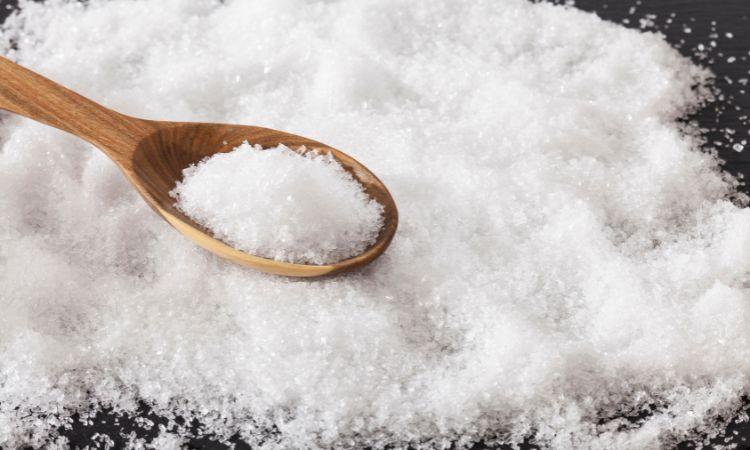Benzyl Chloride Market: A Workhorse for Organic Synthesis

The global benzyl chloride market size is expected to grow at a CAGR of 3% in the forecast period of 2024-2032, driven by its continued importance in various industries. But beyond its market significance, benzyl chloride holds a special place in the hearts of organic chemists. It's a versatile and reliable starting material, a key player in numerous reactions, and a crucial component for crafting complex molecules. This blog post dives into the exciting world of benzyl chloride applications in organic synthesis.
Benzyl Chloride: A Chemical Powerhouse
Benzyl chloride, also known as chlorotoluene, is a colorless liquid with a distinctive odor. Chemically, it boasts a reactive chloromethyl group (CH₂Cl) attached to a benzene ring. This combination makes it a valuable reagent, readily undergoing transformations to yield a diverse range of organic compounds.
Exploring the Power of Benzyl Chloride in Synthesis
Organic chemistry revolves around the creation of new organic molecules with specific properties. Understanding the fundamental principles of organic chemistry is vital to appreciating benzyl chloride's role. Here, we'll delve into its specific functions as a starting material and explore some of its most impactful applications.
Benzyl Chloride as a Starting Material
Benzyl chloride acts as a springboard for organic synthesis due to its readily available chloromethyl group. This reactive group participates in various transformations, allowing chemists to build complex molecules strategically. Some of the most common reactions and transformations involving benzyl chloride include:
- Alkylation reactions: Benzyl chloride serves as an alkylating agent, introducing a benzyl group (C₆H₅CH₂) to other molecules.
- Nucleophilic substitution reactions: The reactive chlorine atom in benzyl chloride is susceptible to attack by nucleophiles (electron-rich species), leading to the formation of new carbon-carbon bonds.
- Protective group chemistry: The benzyl group can be strategically introduced to shield sensitive functional groups during a synthesis, followed by later removal (deprotection) to reveal the desired functionality.
Alkylation Reactions: Tailoring Aromatic Molecules
One of benzyl chloride's key applications lies in Friedel-Crafts alkylation. This reaction utilizes a Lewis acid catalyst to attach the benzyl group to aromatic rings. This allows chemists to tailor the properties of aromatic compounds, such as pharmaceuticals, dyes, and polymers.
Beyond Friedel-Crafts reactions, benzyl chloride also participates in nucleophilic substitution reactions. Here, the chlorine atom is displaced by a nucleophile, forming new carbon-carbon bonds. This versatility enables the synthesis of various organic compounds with specific functionalities.
Protective Group Chemistry: A Strategic Play
Organic synthesis often involves manipulating molecules with delicate functional groups. Benzyl chloride comes to the rescue in protective group chemistry. The benzyl group can be reversibly attached to a sensitive functional group, protecting it from unwanted reactions during the synthesis. Following the desired transformations, the benzyl group is removed through a deprotection reaction, revealing the intact functional group.
This approach plays a crucial role in peptide synthesis, a vital field for creating complex molecules like proteins and drugs. Benzyl chloride is used to protect amino acid side chains during peptide assembly, ensuring the formation of the desired peptide sequence.
Building Blocks for Complex Molecules
Benzyl chloride isn't just a starting material; it's also a gateway to valuable intermediates and building blocks for further synthesis. Here are some examples:
- Synthesis of benzyl esters: These esters serve as important intermediates in various organic reactions. Benzyl chloride readily reacts with carboxylic acids to form benzyl esters, which can be further manipulated to obtain desired products.
- Preparation of benzylamines: Nucleophilic substitution reactions involving benzyl chloride and amines lead to the formation of benzylamines. These versatile building blocks find applications in the synthesis of pharmaceuticals, dyes, and other complex organic molecules.
Showcasing the Power: Case Studies in Action
To truly appreciate benzyl chloride's versatility, let's explore specific examples. Imagine synthesizing a new antibiotic with a unique structure. Benzyl chloride could be employed in a Friedel-Crafts reaction to introduce a benzyl group onto an aromatic ring, altering the molecule's properties and potentially enhancing its antibiotic activity.
In another scenario, benzyl chloride might be used strategically in peptide synthesis. By protecting specific amino acid side chains with benzyl groups during peptide assembly, the chemist ensures the formation of the desired peptide sequence. Subsequent deprotection reveals the functional groups, leading to the final peptide product.
These are just a few examples, highlighting the immense potential of benzyl chloride in organic synthesis. Its ability to participate in diverse reactions, act as a protective group, and serve as a precursor to valuable intermediates solidifies its position as a cornerstone of organic chemistry.
- Questions and Answers
- Opinion
- Story/Motivational/Inspiring
- Technology
- Art
- Causes
- Crafts
- Dance
- Drinks
- Film/Movie
- Fitness
- Food
- Games
- Gardening
- Health
- Home
- Literature
- Music
- Networking
- Other
- Party
- Religion
- Shopping
- Sports
- Theater
- Wellness
- News
- Culture
- War machines and policy

